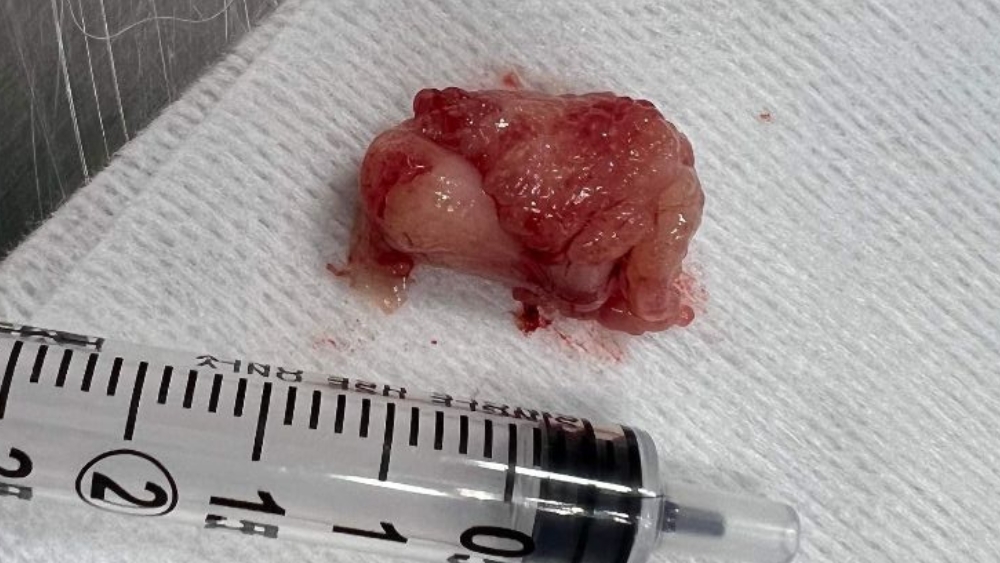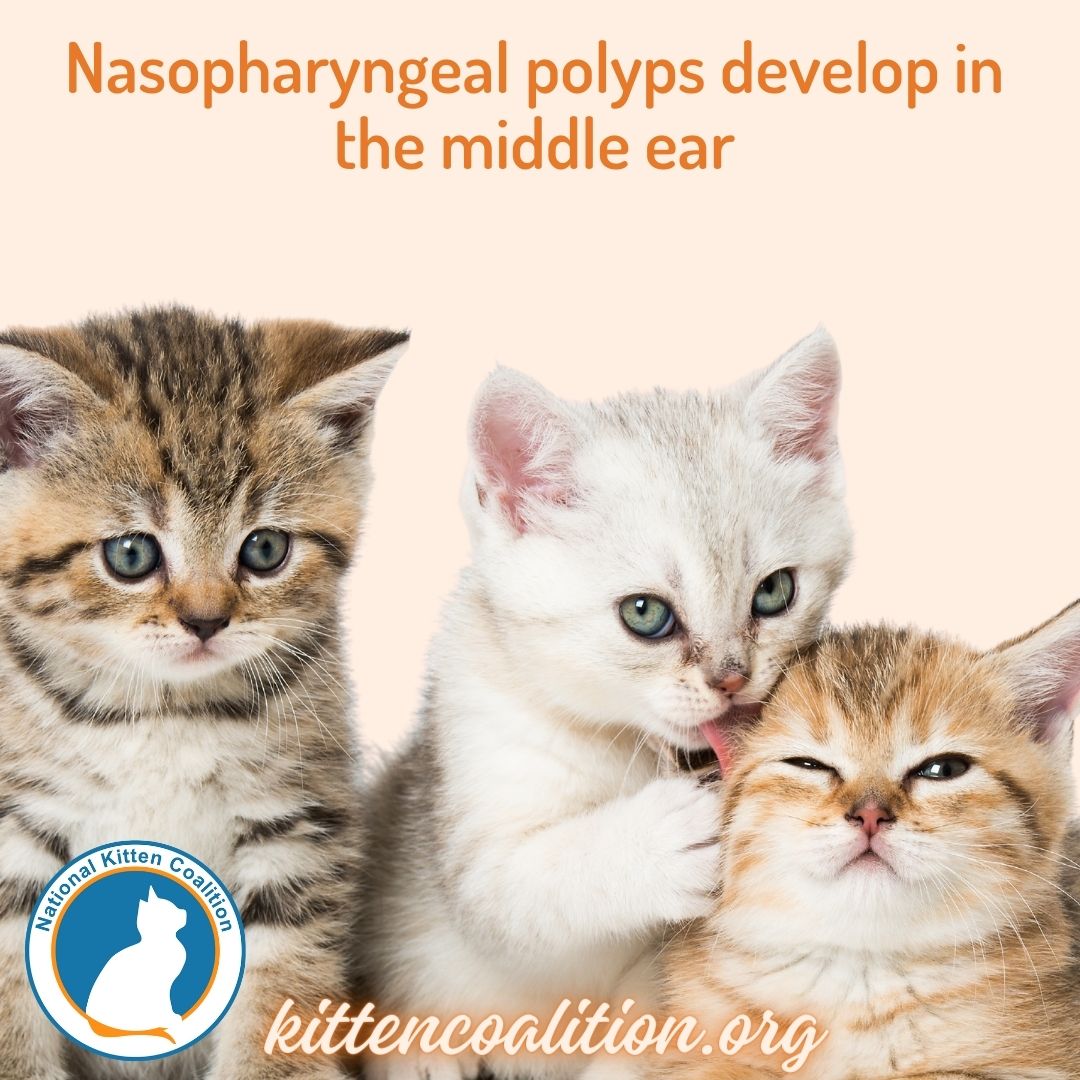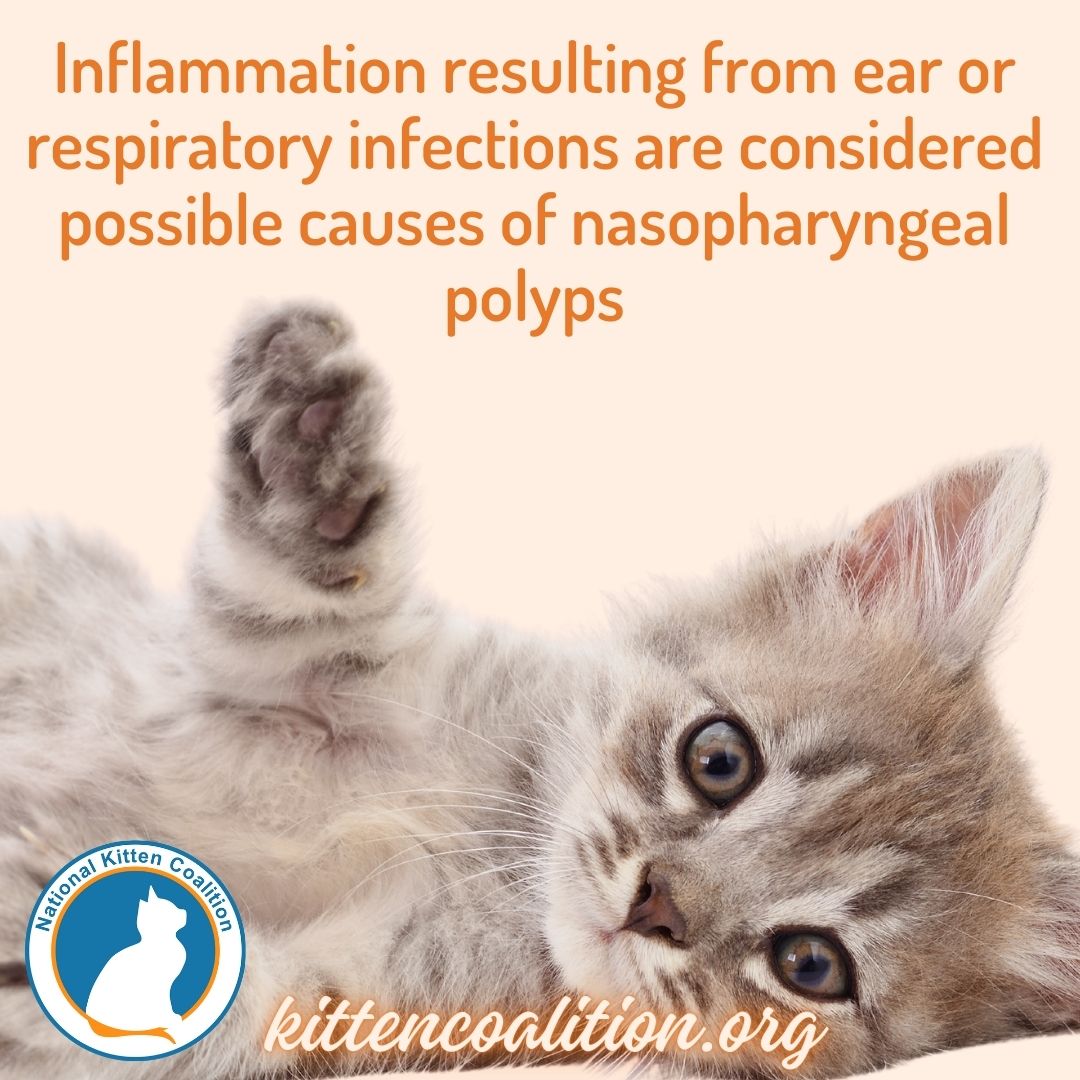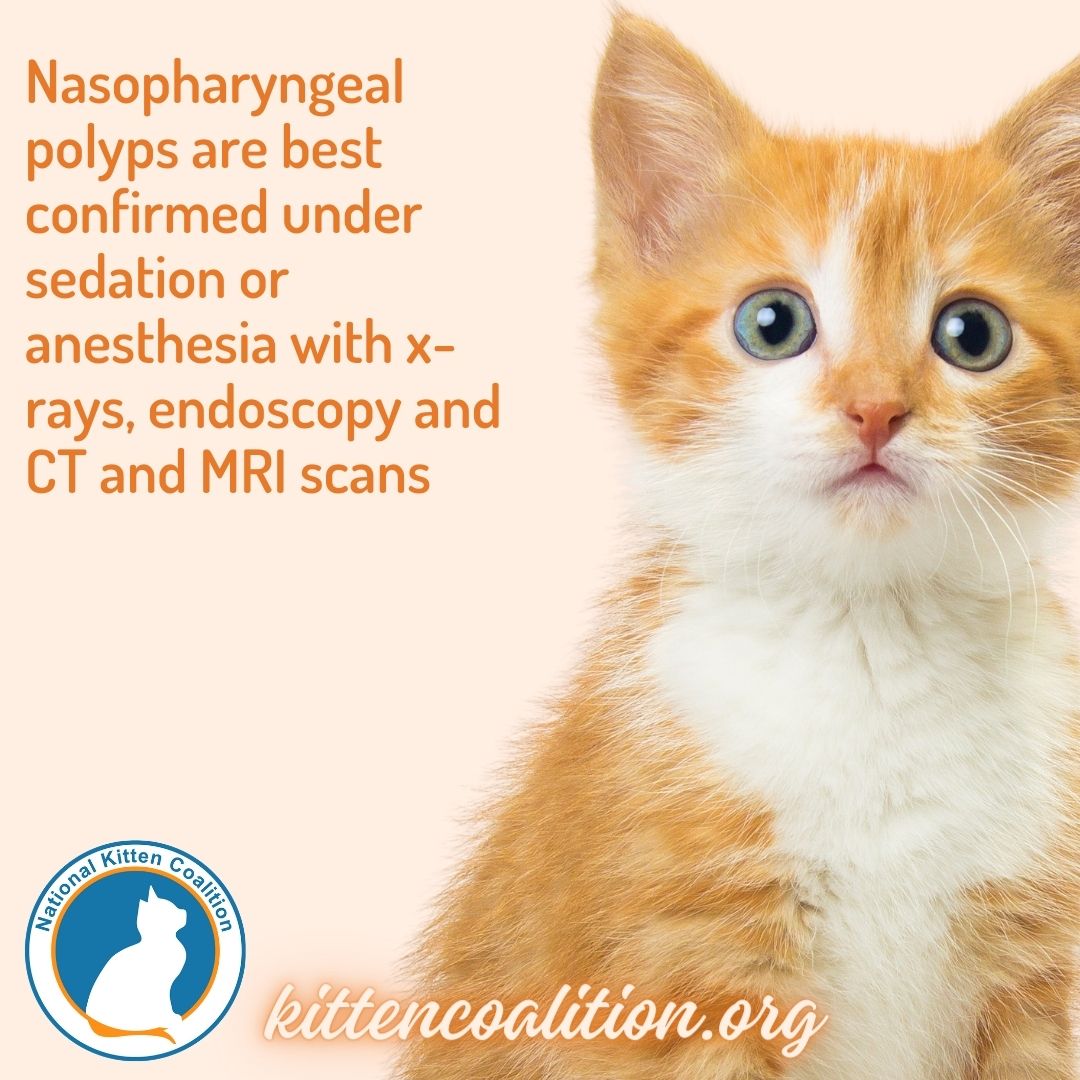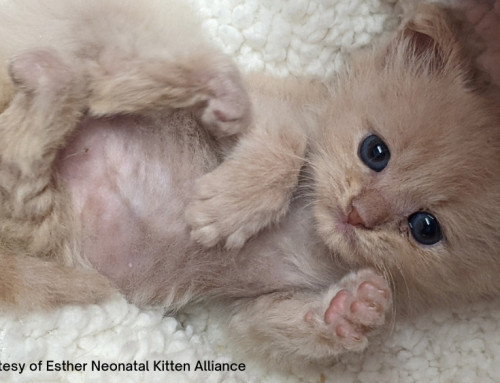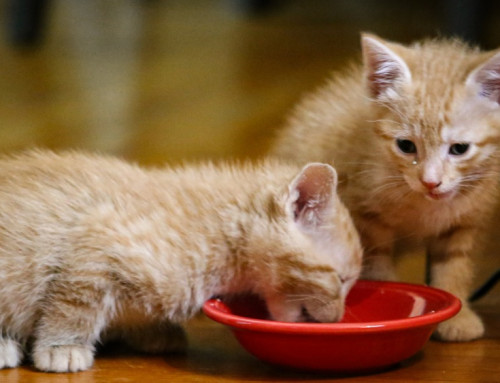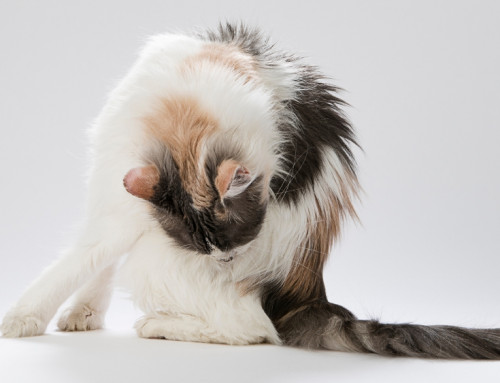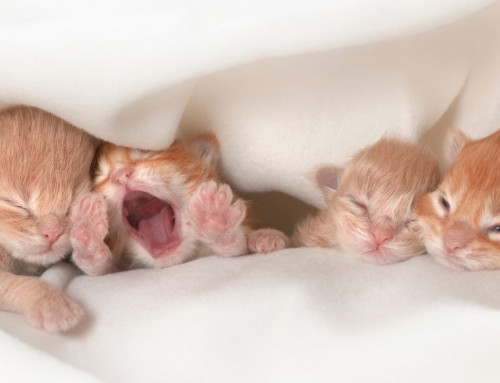Share this resource or email it to a friend!
What Are Nasopharyngeal Polyps in Kittens and Cats?
Nasopharyngeal (refers to the upper part of the pharynx/throat that connects with the nasal cavity above the soft palate) polyps are benign, inflammatory tissue masses that develop in the middle ear, the compartment just behind the eardrum. As polyps enlarge, they grow down the eustachian tube, which connects the middle ear to the back of the throat. As polyps continue expanding, they may partially block the cavity at the back of the mouth above the soft palate. Polyps may also grow through the ear drum into the external ear canal, and, in some cases, grow in both directions, through the ear drum into the ear canal as well as towards the back of the throat.
Cats of any age, breed or sex can get nasopharyngeal polyps, but they are most frequently seen in kittens or cats under one year of age. Although these growths are benign, they can cause difficulty breathing or chronic ear canal infections, depending on their location.
What Causes Nasopharyngeal Polyps in Kittens and Cats?
The specific cause of nasopharyngeal polyps is unknown although inflammation resulting from ear infections or respiratory infections, such as calicivirus or herpes viruses, have been considered as possible causes.
What Are the Symptoms of Nasopharyngeal Polyps in Kittens and Cats?
When polyps reach a certain size, the following symptoms may occur:
- Secondary bacterial infections can develop due to the blockage and accumulation of secretion
- A distinctive sneezing/snorting sound during breathing
- Labored and noisy breathing
- Difficulty swallowing/gagging
- A change in the kitten’s/cat’s voice
- Nasal discharge which may be clear, purulent or have some blood in it
- Pawing at the ear, head shaking, head tilt or discharge and bad odor from the ear
- Loss of balance, different pupil sizes/shapes and nystagmus (an involuntary movement of both eyes in the same direction)
How Are Nasopharyngeal Polyps in Kittens and Cats Diagnosed?
The presence of a nasopharyngeal polyp is best confirmed under sedation or anesthesia so a thorough examination can be done behind the soft palate and of the ear canal and eardrum. Radiographs (x-rays) of the skull can help identify nasopharyngeal polyps and the use of a video endoscope may allow direct visualization of the polyp. CT (computed tomography) or MRI (magnetic resonance imaging) will help determine whether the polyp has extended beyond the middle ear.
What Is the Treatment for Nasopharyngeal Polyps in Kittens and Cats?
Surgical removal of nasopharyngeal polyps is considered the standard of care. Nasopharyngeal polyps are removed under anesthesia by performing:
- A traction/avulsion surgery to remove a polyp at the back of the throat. Small forceps are used to gently and steadily pull on the polyp. Although the entire polyp cannot always be removed using this technique, breathing and other symptoms will generally improve. Polyp regrowth is common using this technique.
- A ventral bulla osteotomy surgery to remove a polyp at its origin by opening the middle ear. This technique is used when the polyp is large, advanced symptoms occur, such as severe head tilt, and when polyp regrowth occurs after traction/avulsion surgery. Ventral bulla osteotomy, a major surgical procedure, is the most effective treatment for preventing nasopharyngeal polyp regrowth and should be performed by a board-certified veterinary surgeon.
- A total ear canal ablation surgery to remove the affected ear canal. The inner ear (the hearing organ) is not removed.
Evaluation of a removed polyp for malignancy may be recommended, especially in middle-aged or older cats or of polyps in the ear canal.
Post-surgical treatment typically involves anti-inflammatory medication, pain medication and a course of antibiotics if infection is suspected. Depending on the surgery, an e-collar may be indicated to prevent cats from injuring the surgery site.
What Is the Prognosis for Kittens and Cats with Nasopharyngeal Polyps?
Depending on the polyp’s location, possible complications of ventral bulla osteotomy and total ear canal ablation surgeries include:
- Reduced hearing
- Facial nerve paralysis, involving mild drooping of the upper lip and eyelid and a reduced blink reflex on the affected side, which usually resolves over 4-6 weeks; permanent damage is possible
- Protrusion of the nictitating membrane (third eyelid), aka Horner’s Syndrome, which usually resolves within a month
- Balance problems, which usually resolve within a month
- Wound healing complications
- Infection/abscess formation
Prompt diagnosis and appropriate treatment of nasopharyngeal polyps leads to a better prognosis; the majority of kittens and cats can be permanently cured and enjoy quality lives.

